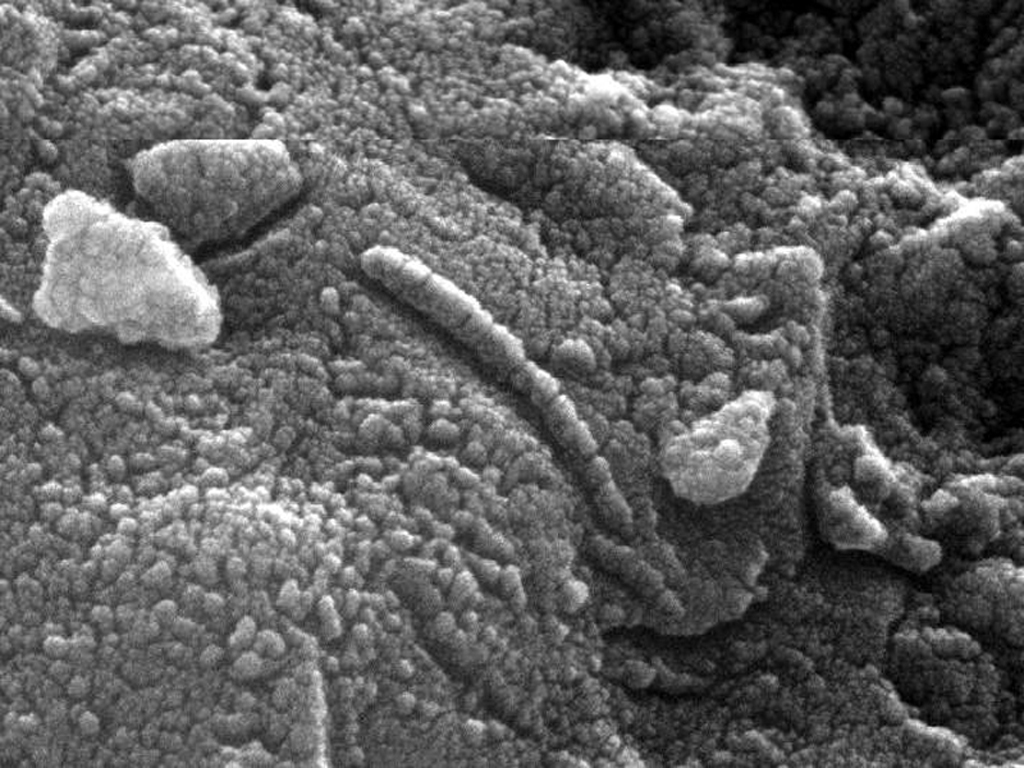I gave a KIAA pizza talk about Mars in January 2015. This was an overview of topics related to Mars that were being discussed at the time. I curated much of the information from various Wikipedia articles and NASA press releases. The focus is the Martian atmosphere, transient detection of methane, and the Martian meteorite ALH84001.

Introduction and atmosphere
The Opportunity rover has been active on Mars for eleven years (landed on 25 January, 2004)! The ALH84001 rock has been collected thirty years ago (27 Dec. 1984). The Curiosity rover (more formally known as the Mars Science Laboratory) has been on Mars for two and a half years. Let us consider Mars as if it were an exoplanet. The transit probability is P = R/a ~ 0.3% and the transit depth is ~10-5; maximum radial velocity of 0.01 m/s (Jupiter gives ~10 and Earth ~0.1). Mars’s orbit is eccentric (e = 0.1; cf. 0.02 for Earth), this means that there is almost 50% more sunlight at perihelion than aphelion (less than 7% for Earth).
Thijs discussed a paper where it seemed Pluto’s atmospheric pressure increases now when it is moving away from the Sun. The proposed explanation was that some of the atmosphere was frozen in one of the poles, and it sublimates now when Pluto is a transition season. The same process is known from Mars: the average atmospheric pressure is about 0.6% that of the Earth at sea level, but while Earth normal variations (not including cyclones) are well below 1%, on Mars seasonal variations are 30%. This is due to collapse of the atmosphere: it gets so cold that part of the CO2 freezes and accumulates on the ice caps. Mars’s weather is asymmetric with respect to the equator: southern winter is colder because Mars also happens to be farther from the Sun.
The polar caps are mostly water ice (2 km thick, like in Greenland). CO2 only forms a layer 1 m thick in the north pole. The south pole has a permanent CO2 cover 8 m thick (some suggestions that it is degrading every year; global warming?) It snows CO2 in the polar regions, but water precipitates in the tropics (see link). When the CO2 sublimates in spring and autumn, the change of pressure creates 400 km/s winds that sweep the poles, depositing dust and ice crystals into the atmosphere (so in spring and autumn, the atmosphere is deposited with relatively large amounts of dust and water). Talking about dust, the PM2.5 AQI on Mars in standard conditions is ~220 or 180 μg m-3 (see link), which is normally worse than Beijing. The poison atmosphere and low pressure are more harmful to human life.

Methane
Recently there has been excitement that minute quantities of methane have been discovered. This seems to suggest some sort of activity or cycle unknown before. The first set of points in the graph below are non-detections, but highly varying low background level (up to a few ppb) is known at other locations on Mars (The background could result from UV degradation of surface organics; organic does not imply biological). Photochemistry destroys methane on Mars, so it’s detection implies creation. The spikes are more difficult to explain, they represent birth of methane. This could be biological (which would be amazing) or geological (which is also pretty cool because the leading idea requires the presence of liquid water). Another geochemical mechanism is that methane is not really produced but leaks from clathrate storage, but this means methane reservoirs had to be made in the past! At any rate the speed of rise and fall indicate a source well localized and small.

ALH84001

It’s a meteorite discovered in Antarctica 30 years ago. Originally misclassified as diogenite, which are meteorites originating in the main belt. In the middle of the 90s it was noticed that it is very similar to Martian meteorite and analysis confirmed.
How do we know that any meteorite is from Mars, and how did it get here anyway? The relative concentration of some isotopes trapped in the meteorite match what is measure empirically in the Martian atmosphere (see figure on the right). However ALH84001 is different from other Martian meteorite in that it is much older, about 4 billion years old (other Martian meteorites, the SNC group, are thought to be much younger). There are 132 Martian meteorites known to date. The minerals in ALH84001 unequivocally indicate that it was in a wet environment.

The hype was mostly over this picture which purports to show fossilized organisms. Those structures are tiny: 20-100 nm, which is significantly smaller than Earth bacteria. There are some corroborating evidence, but the claim for past life is very controversial:
- Microscopic mineral grains found in the carbonate globules, they are similar to some produced by bacteria on Earth. While similar mineral grains can be produced by inorganic processes, the three minerals they identified (magnetite, pyrrhotite, and greigite) have all been found on Earth as products of biological activity. The mineral grains identified in ALH84001 are very similar in size, shape, and structure to some grains produced on Earth by bacteria.
- PAHs (Polycyclic Aromatic Hydrocarbons). Those are organic molecules which on Earth can form in biological processes like decay of bacteria. They also exist in main belt meteorites and interstellar dust, where they form in non-biological processes.
The authors showed that the specific PAH composition in the rock is different from other sources and seem to be unique to Mars. That being said, there could be a uniquely non-biological Martian process that created those PAHs. The authors stated: “None of these observations is in itself conclusive for the existence of past life. Although there are alternative explanations for each of these phenomena taken individually, when they are considered collectively, particularly in view of their spatial association, we conclude that they are evidence for primitive life on Mars”.